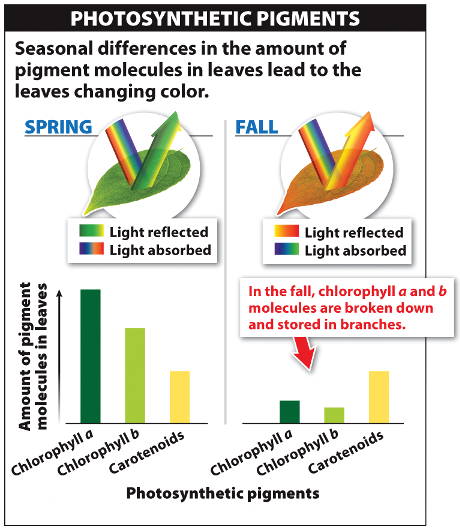 Why are leaves green?
Why are leaves green?
During spring,
chlorophyll
in leaves mask the presence of other pigments called
carotenoids.
The
chlorophyll
absorb most of the visible wavelengths except those around 500 to 600 nm, and reflect
these green
wavelengths, so leaves appear green.
Cool temperatures in the fall cause many trees to cease producing
chlorophyll,
and the
carotenoids
reflect orange/yellow light, giving bright colors to autumn leaves.
Review: 

 Energy
Energy 
 Energy
Energy 